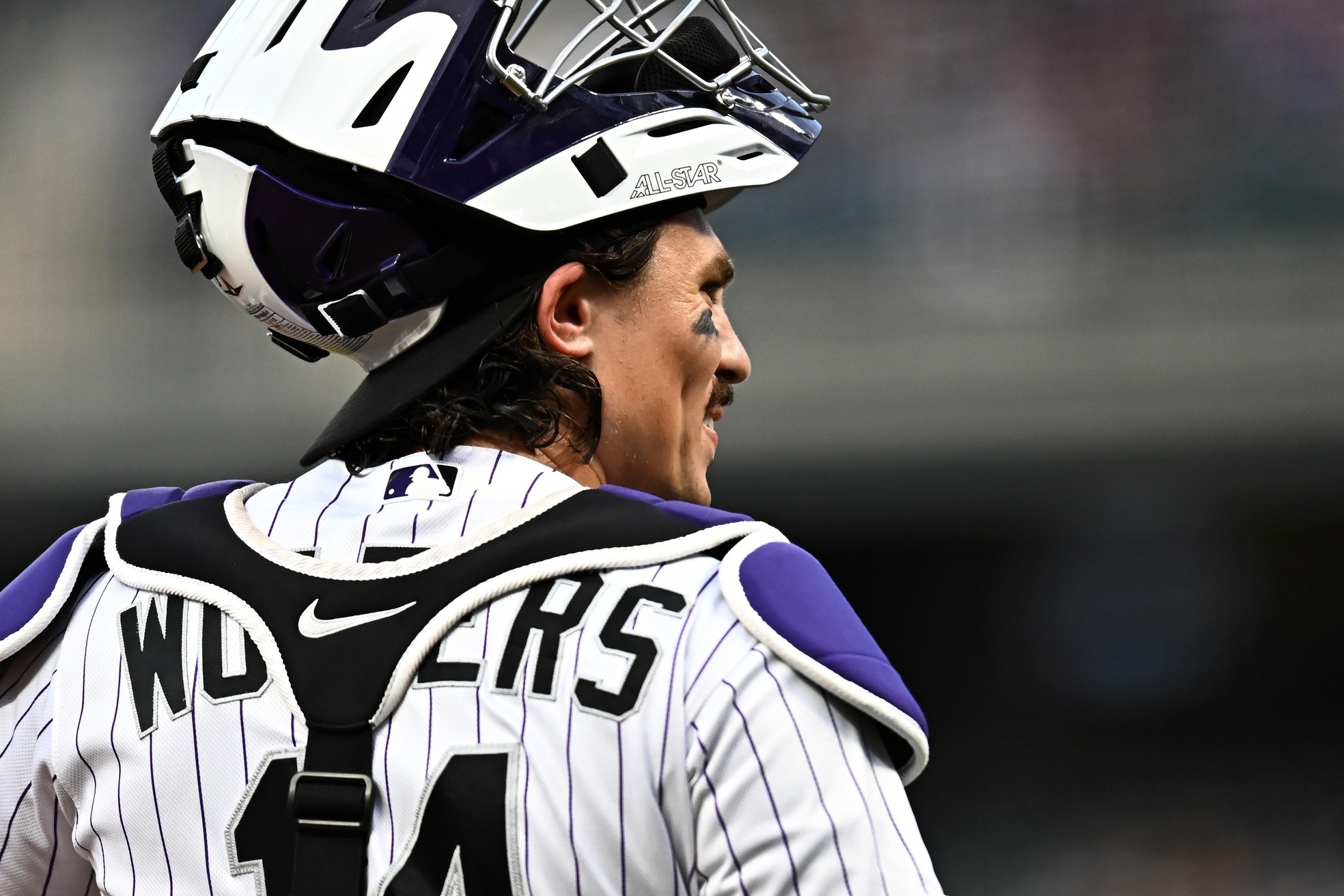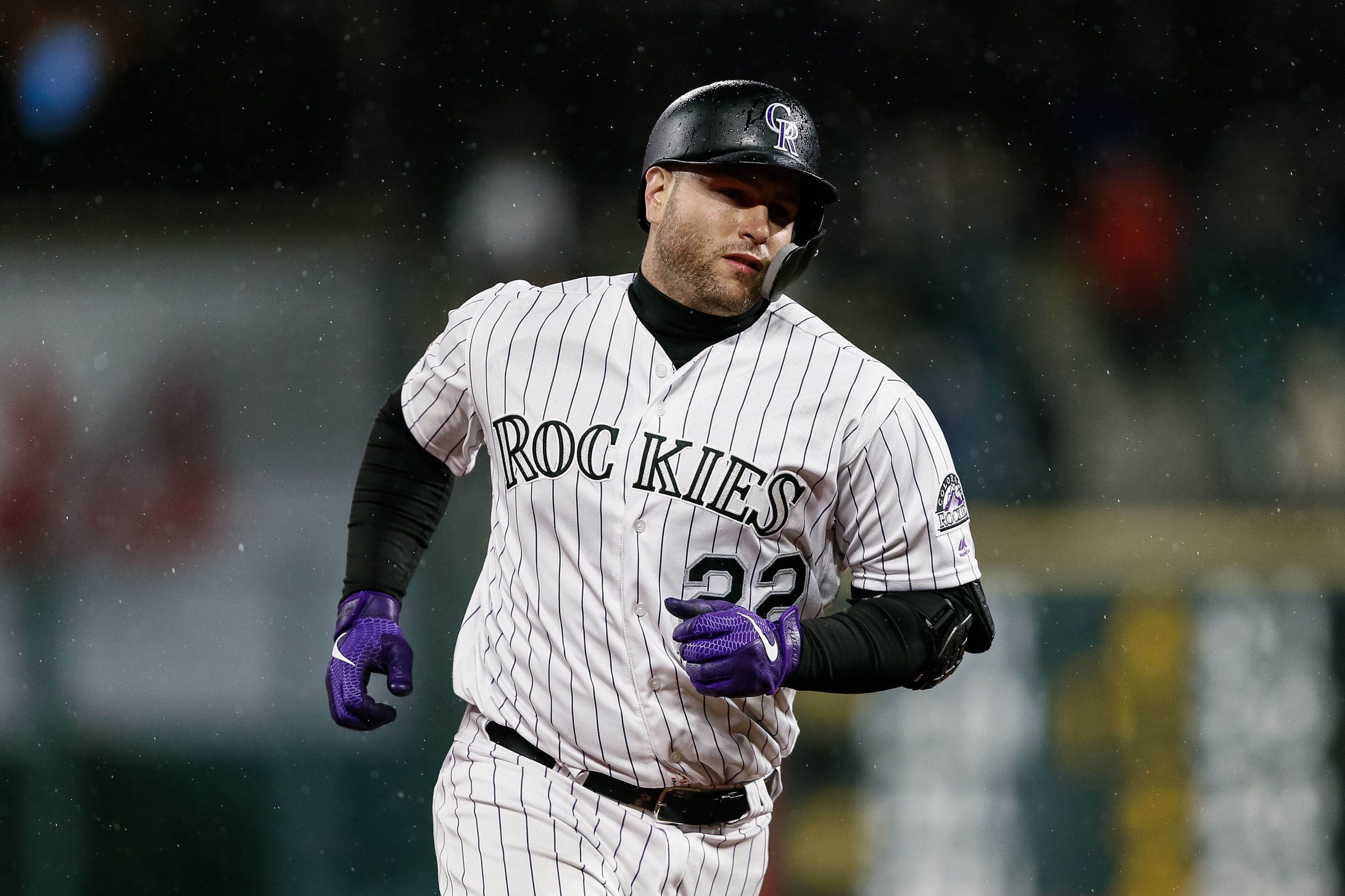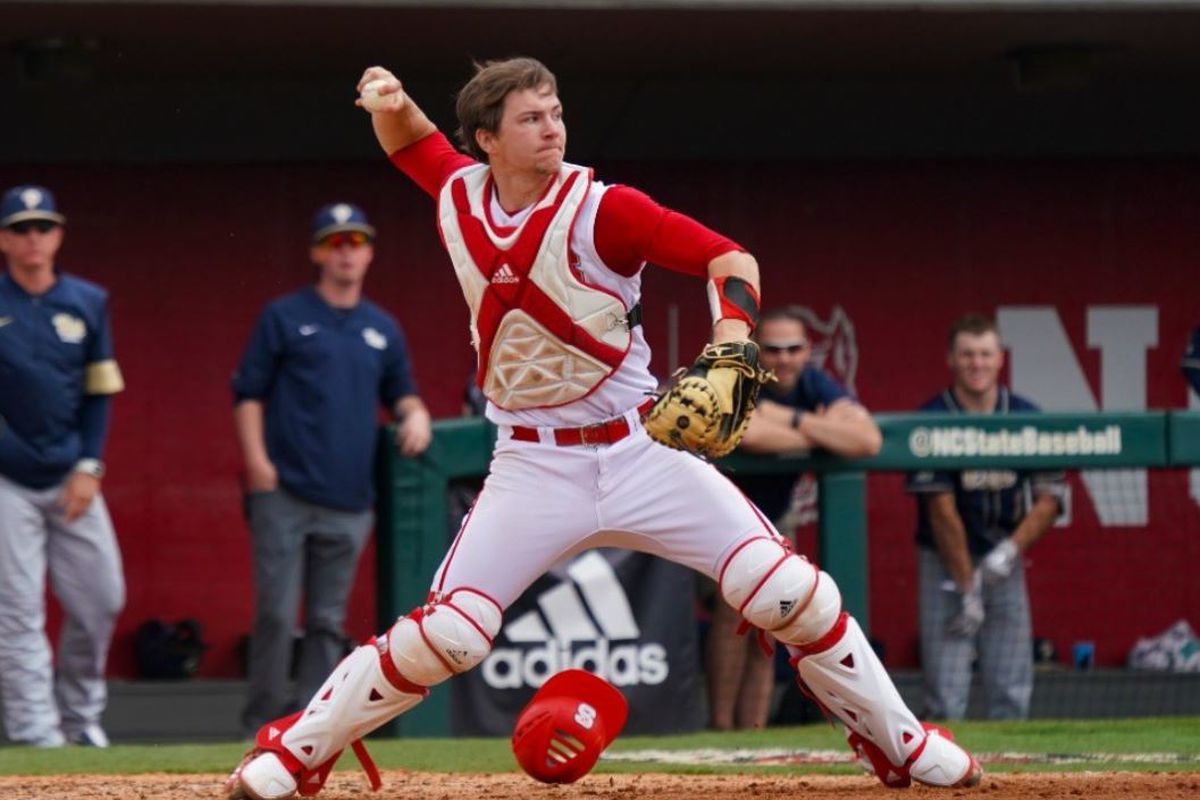© 2025 ALLCITY Network Inc.
All rights reserved.

In the NBA, NFL, and, perhaps, NHL – I’m not sure yet I’m still learning – a team with a certain positional need throughout their organization would suggest that position should undoubtedly be targeted in the upcoming draft.
As is often the case, things are a bit different in MLB.
The time between being drafted and reaching the highest levels – the success/failure rate of top prospects, even the possibility that a player might completely change position before ever impacting the big league club – all amount to a need to adopt a different approach.
Still, the Colorado Rockies arguably have a need at catcher both in the Bigs and throughout their farm system. Tony Wolters is the incumbent starter and will be a free agent following the 2022 season, not to mention he’ll be on the wrong side of 30. He also has a well-known limited offensive profile.
Dom Nuñez still has something to prove and could become the next heir to the throne, but question marks are posited over the remainder of young catchers in the organization.
While this draft has several intriguing backstops slated to go in the first round, does that mean Colorado will break from a tradition of spending very few resources on the position?
Let the debate begin. Creasman vs. Lyons: Falls Count Anywhere

Do the Rockies have an aversion to investing in catchers and is that a bad thing?
Lyons: To date, the Rockies have yet to produce an All-Star at catcher. Could this be the reason they’ve yet to win their first championship?
No.
Of the 10 starting catchers featured in the last five World Series, only three had made more than one appearance in the Mid-Summer Classic.
That’s a small sample size, but consider the 2017-18 Los Angeles Dodgers: in consecutive World Series appearances, they opted for the defense of backup Austin Barnes than that of multi-time All-Stars Russell Martin and Yasmani Grandal, respectively.
It may come as a shock, but only 25 catchers produced 10.0 fWAR or more during the last decade. In 2017, Colorado had two of these players on their roster: Jonathan Lucroy and Ryan Hanigan. Regardless, such overall talent can be hard to come by.
Ultimately, there’s a fallacy that teams can just acquire a great backstop. Most have stopped trying. For every Joe Mauer or Buster Posey that is heralded as the game’s next star, there are hundreds that don the tools of ignorance and never reach the promised land. Crash Davis, anyone?
At this time, MLB has put a premium on defense for catchers much like it did with shortstops through the 80s until Cal Ripken Jr. came along and changed the position.
In Colorado, that defensive value is exponential. Block balls in the dirt, calm your pitcher and frame those pitches. Until the automated strike zone takes away some of those important elements of the game, whatever you get on offense from the catcher is a bonus.
Creasman: I could see how looking at some of the names and numbers over the years could lead someone to believe that the Rockies simply don’t value the position, but I don’t think that could be further from the truth.
Historically, Colorado has valued defense at catcher far more than any other attribute and that ideology has only grown over the years. Not only does it make a ton of sense for a ballclub that calls the most chaotic environment in baseball home, results have confirmed of any attempt to move away from this philosophy.
A catcher’s most important job, especially at Coors Field, is run prevention. One must be careful of overdrawing conclusions from correlation, but a quick peak at Rockies’ history will reveal the years in which they’ve reached the postseason tend to be marked by excellent pitching and defense, while offense actually falls back a bit.
The catchers to lead the best teams for this franchise were all average to below-average offensively: Joe Girardi, Yorvit Torrealba, and Wolters. Only Chris Iannetta provided above-average abilities with his bat.

On the flip side you have the Tom Murphy’s and Wilin Rosario’s of the world who displayed a tremendous ability to hit better than fans in Denver have ever seen from a catcher. However, those guys couldn’t hold up their end of the run-prevention bargain which hurts the team far more than their hitting could help.
So, I would say that the Rockies have an aversion to bat-first catchers and that the free market tends to put a lot more value on the stick. As such, they have wisely sought out low-risk, medium-reward players like Elias Díaz.
As Patrick said above, catchers that can do everything are basically once-in-a-generation unicorns so being reluctant to pour resources into drafting and/or developing them seems the accurate approach.
With only six selections, will Colorado draft a catcher on June 10?
Lyons: In a word, no.
When considering the evolution of former infielders Tony Wolters and Dom Nuñez as more than capable catchers, the Rockies shouldn’t waste one of their precious picks on an amateur backstop.
While they might find it difficult to sign a player for only $20,000 – the going rate of an undrafted free agent – they can afford to focus on other needs, predominantly starting pitching.
Colorado could get savvy and get a collegiate player looking to start his pro career. For example, if the Rockies take righty Bryce Jarvis, they could convince his catcher at Duke, Michael Rothenberg, to jump aboard.
In a similar fashion, Louisville outfielder Zach Britton has some catching experience, but is deemed to a poor receiver. Should teammates Reid Detmers or Bobby Miller find themself in purple, Britton could be a project for coaching coordinator Mark Strittmatter, especially since the 21-year-old is described as having a “fairly loud left-handed bat” by Baseball America.
Creasman: In almost any other year this would be an easy no. Yet, I’m starting to wonder if the stars have aligned here.
The position is unquestionably weak, their best prospect (Nuñez) has basically graduated, and some incredibly intriguing names should be available throughout this draft.
Patrick is probably right that it is more likely they go for a value pick later on in the draft, but Patrick Bailey could be a consideration at 9th overall, especially if it saves the Rockies some bonus pool money for a splash on their compensation pick. Austin Wells and Dillon Dingler could be available at pick No. 35 or 46, and I could totally see them jumping at that.

All three guys are college players with more than adequate Power 5 conference experience. Bailey and Dingler have promising defensive profiles and if Colorado’s scouts like what they can do behind the dish, this could be a rare opportunity to actually get return on spending a high pick on such a volatile position.
Which backstop should the Rockies target in the 2020 MLB Draft?
Lyons: Of the top 100 catchers available in this year’s draft, only three are from the college ranks. Selecting a high school backstop that slips to a later round might become a boon for Colorado, but there’s one relatively large issue that need addressing first.
How much does having no minor league season impede a prep player’s development?
It can already take four seasons in the minors for a catching prospect to have all the tools needed to handle a major league pitching staff. With 2020 a wash, it could be a crapshoot to hope an 18-year-old backstop will advance his abilities better than a college arm in one of the deepest drafts for Colorado’s biggest need: pitching.
Creasman: Any of the guys I mentioned above are attractive options, but should not necessarily targeted.
In no way would I take a high school player or anyone who has questions about their ability behind the plate unless the bat is just that good and you don’t really view it as taking a catcher in the first place.
There is a chance here though. This draft is going to get weird. Players who are way too talented to be taken at 35 and 46 will be available. If you can spend your top pick on your favorite arm and then grab a potential impact catcher with your second or even third pick, it could be a boon. Conversely, if you think the pitching talent is just that deep, you could shock the world at take-your-pick of the best amateur backstop in the country.
I wouldn’t target a catcher, but I would absolutely be ready to grab one.
Comments
Share your thoughts
Join the conversation




